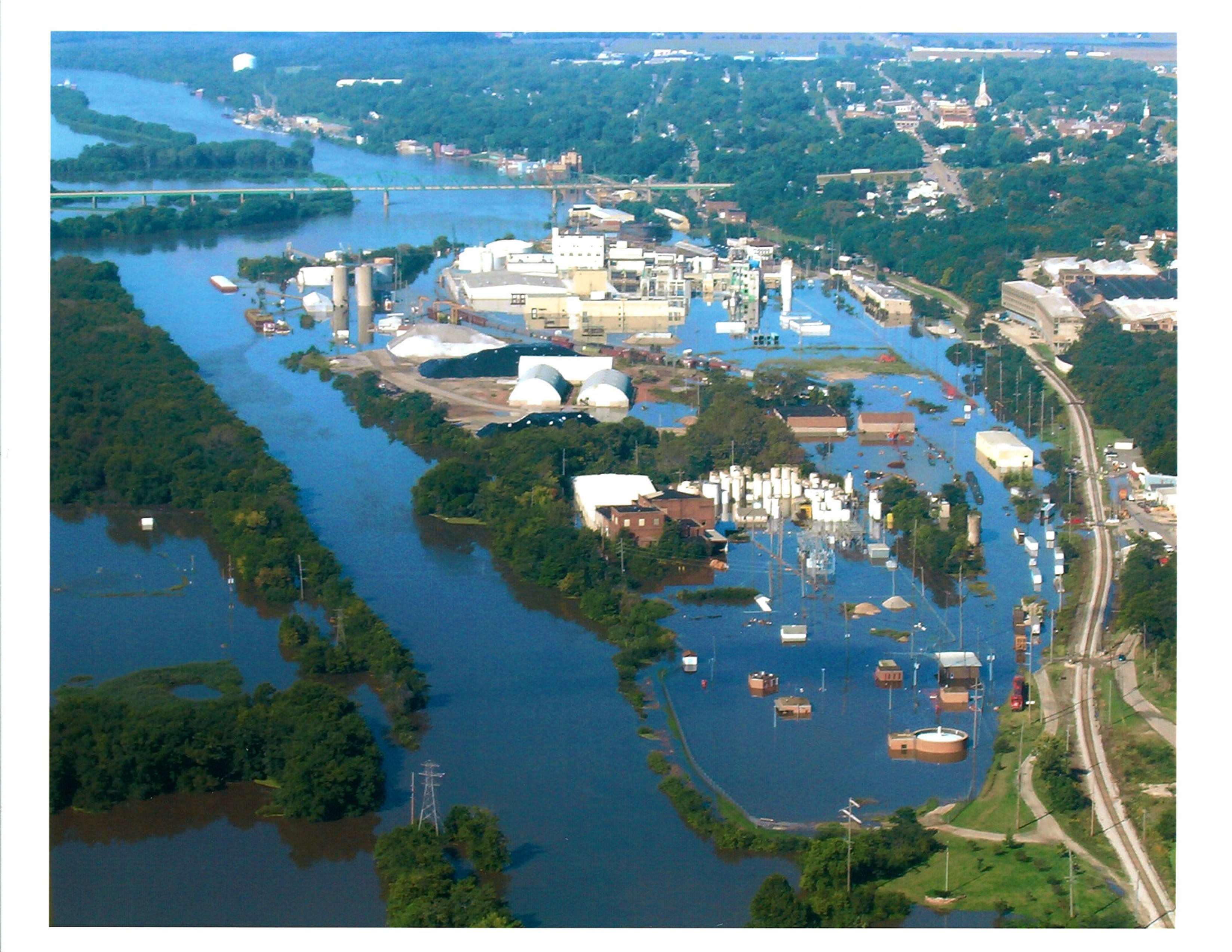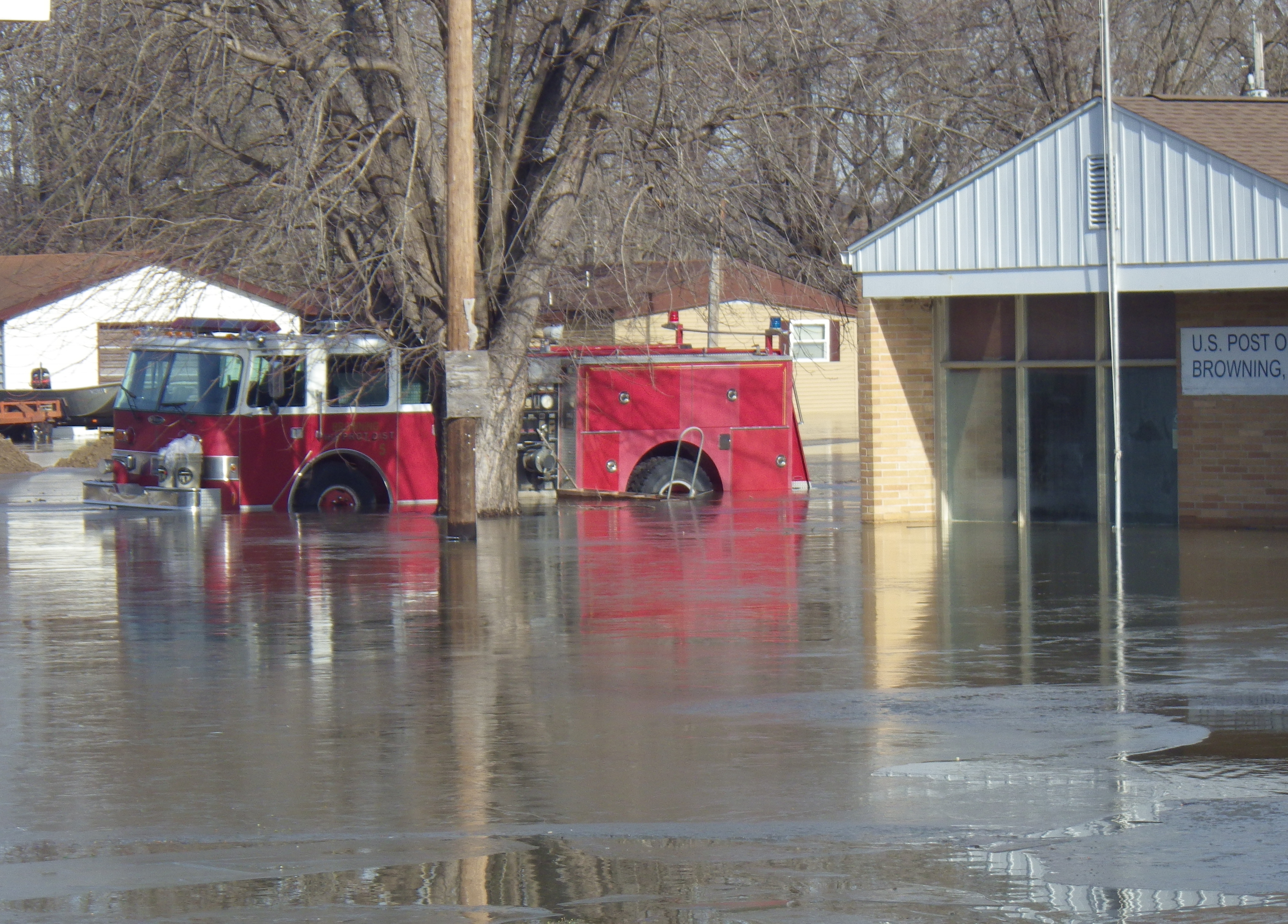Historic floods
Floods are among the worst of natural disasters, in terms of lives lost and property damaged and floods can affect any area to some degree. Wherever rain falls, flooding can occur, as proven by historic Illinois floods.
 |
September 2008 FloodMajor flooding occurred in northeastern Illinois during September 13–16, 2008. The recorded rainfall over a 51-hour period during September 12–14, 2008 ranged from 2.39 to 10.51 inches, which resulted in extensive urban and riverine flooding. As a result, thousands of residents were evacuated and there were millions of dollars in damages, hundreds of road closings, and two water-related fatalities in the greater Chicago area. Nine counties in northeastern Illinois (16 counties throughout the State) were declared Federal disaster areas. USGS stream gages recorded new record-peak stream flows at 13 locations. After the flooding subsided, 230 new high-water marks were set in over 40 communities along 131 miles of streams. |
July 1996 FloodRecord rainfall amounts over 16 inches were reported for the 24-hour period ending at 7:00 a.m. on July 18, 1996, in northern Illinois. This rainfall produced record flooding in highly urbanized northern Illinois from July 18 through July 20, 1996. This flooding caused hundreds of millions of dollars in damage and two deaths. Numerous houses were flooded, and roadway infrastructure in the area was damaged as many roads and bridges were washed out. Three dams in the region experienced complete failure and numerous other dams were overtopped, experiencing varying degrees of damage. The Illinois Governor declared 15 northern Illinois counties State disaster areas, followed by a Federal disaster declaration of 11 Illinois counties. |
 |
Great Flood of 1993The Great Flood of 1993 began in early June with saturated soils and streams filled to capacity across the Upper Midwest. Runoff heavy rains in June, July, and August overflowed the streams and river channels. Flooding began on rivers in Minnesota and Wisconsin and eventually reached the Mississippi River, cresting at St. Louis on July 12. A new record crest (over 4 feet higher than the previous record) was measured on the Illinois River at Hardin on August 3. Every streamflow-gaging station on the Mississippi River from Rock Island, Illinois to Thebes, Illinois experienced a new flood of record. The areal extent, intensity, and long duration of the flooding makes this one of the greatest natural disasters in the United States. At least 48 people lost their lives as a result of this extreme flood (Interagency Floodplain Management Task Force, 1994). Nearly 150 major rivers and tributaries flooded. Levees were broken; farmland, towns, and transportation routes were destroyed; and more than 50,000 homes were damaged or destroyed (Josephson, 1994). Economic damages approached $20 billion (National Oceanic and Atmospheric Administration, 1994). |